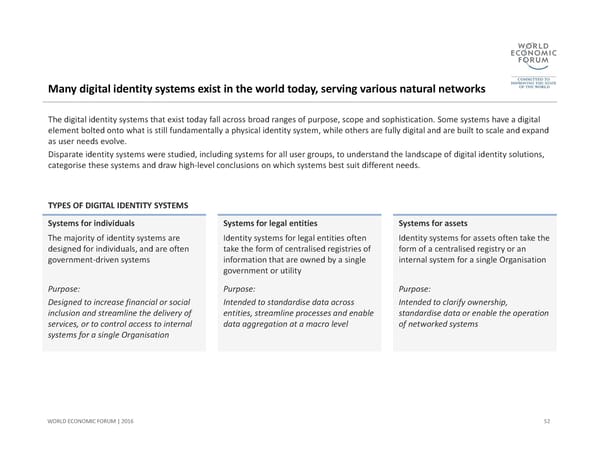Many digital identity systems exist in the world today, serving various natural networksThe digital identity systems that exist today fall across broad ranges of purpose, scope and sophistication. Some systems have a digital element bolted onto what is still fundamentally a physical identity system, while others are fully digital and are built to scale and expand as user needs evolve. Disparate identity systems were studied, including systems for all user groups, to understand the landscape of digital identity solutions, categorise these systems and draw high‐level conclusions on which systems best suit different needs. 52 WORLD ECONOMIC FORUM | 2016 Systems for individuals The majority of identity systems are designed for individuals, and are often government‐driven systemsPurpose: Designed to increase financial or social inclusion and streamline the delivery of services, or to control access to internal systems for a single Organisation Systems for legal entities Identity systems for legal entities often take the form of centralised registries of information that are owned by a single government or utility Purpose: Intended to standardise data across entities, streamline processes and enable data aggregation at a macro level Systems for assets Identity systems for assets often take the form of a centralised registry or an internal system for a single Organisation Purpose: Intended to clarify ownership, standardise data or enable the operation of networked systems TYPES OF DIGITAL IDENTITY SYSTEMS
 A Blueprint for Digital Identity Page 52 Page 54
A Blueprint for Digital Identity Page 52 Page 54